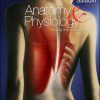Saunders Comprehensive Review for the NCLEX-RN Examination, 5th Edition Test Bank
Silvestri: Saunders Comprehensive Review for the NCLEX-RN® Examination, 5th EditionAdult HealthTest BankMULTIPLE CHOICE1.The nurse reviews the health record of a client with melasma. The nurse would anticipate that this client will exhibit:1.Skin that is uniformly dark in color2.Very pale skin with little pigmentation3.Patches of skin that have loss of pigmentation4.Blotchy brown macules across the cheeks and foreheadANS: 4Rationale: Melasma is a condition caused by hormonal influences on melanin production and is noted by the appearance of blotchy brown macules across the cheeks and forehead. “Skin that is uniformly dark in color” describes vitiligo. “Very pale skin with little pigmentation” and “patches of skin that have loss of pigmentation” refer to normal variations in skin color.Test-Taking Strategy: To answer this question correctly, you must be familiar with the various terms used when discussing skin structures and functions. “Skin that is uniformly dark in color” describes vitiligo. “Very pale skin with little pigmentation” and “patches of skin that have loss of pigmentation” refer to normal variations in skin color. Review the description of melasma if you had difficulty with this question.PTS: 1DIF: Level of Cognitive Ability: UnderstandingREF: Black, J., & Hawks, J. (2009). Medical-surgical nursing: clinical management for positive outcomes (8th ed.). St. Louis: Saunders.OBJ: Client Needs: Physiological IntegrityTOP: Content Area: Adult Health/IntegumentaryMSC: Integrated Process: Nursing Process—Assessment2.The client with cellulitis of the lower leg has had cultures done on the affected area. The nurse reviewing the results of the culture report interprets that which of the following organisms is not part of the normal flora of the skin?1.Escherichia coli2.Candida albicans3.Staphylococcus aureus4.Staphylococcus epidermidisANS: 1Rationale: E. coli is normally found in the intestines and is a common source of infection of wounds and the urinary system. C. albicans, S. aureus, and S. epidermis are part of the normal flora of the skin.Test-Taking Strategy: To answer this question correctly, you must be familiar with the normal microorganisms that inhabit the skin. Note that the question asks for the organism that is not part of normal flora. Remember that E. coli is normally found in the intestines. Review basic skin structures if you had difficulty with this question.PTS: 1DIF: Level of Cognitive Ability: UnderstandingREF: Ignatavicius, D., & Workman, M. (2010). Medical-surgical nursing: patient-centered collaborative care (6th ed.). St. Louis: Saunders.OBJ: Client Needs: Physiological IntegrityTOP: Content Area: Adult Health/IntegumentaryMSC: Integrated Process: Nursing Process—Assessment3.The client complains of chronic pruritus. Which of the following diagnoses would the nurse expect to support this client’s complaint?1.Anemia2.Renal failure3.Hypothyroidism4.Diabetes mellitusANS: 2Rationale: Clients with renal failure often have pruritus, or itchy skin. This is because of impaired clearance of waste products by the kidneys. The client who is markedly anemic is likely to have pale skin. Hypothyroidism may lead to complaints of dry skin. Clients with diabetes mellitus are at risk for skin infections and skin breakdown.Test-Taking Strategy: Focus on the subject, chronic pruritus. Remember that clients with renal failure often experience this problem. If this question was difficult, review the common causes of pruritus.PTS: 1DIF: Level of Cognitive Ability: UnderstandingREF: Ignatavicius, D., & Workman, M. (2010). Medical-surgical nursing: patient-centered collaborative care (6th ed.). St. Louis: Saunders.OBJ: Client Needs: Physiological IntegrityTOP: Content Area: Adult Health/IntegumentaryMSC: Integrated Process: Nursing Process—Assessment4.A client being seen in an ambulatory clinic for an unrelated complaint has a butterfly rash noted across the nose. The nurse interprets that this finding is consistent with early manifestations of which of the following disorders?1.Hyperthyroidism2.Pernicious anemia3.Cardiopulmonary disorders4.Systemic lupus erythematosus (SLE)ANS: 4Rationale: An early sign of SLE is the appearance of a butterfly rash across the nose. Hyperthyroidism often leads to moist skin and increased perspiration. Pernicious anemia is exhibited by pale skin. Severe cardiopulmonary disorders may lead to clubbing of the fingers.Test-Taking Strategy: To answer this question accurately, you must be familiar with the impact of systemic conditions on the skin. Remember that SLE causes a characteristic butterfly rash. If this question was difficult, review the disorders identified in the options and the associated skin conditions that occur in each disorder.PTS: 1DIF: Level of Cognitive Ability: UnderstandingREF: Ignatavicius, D., & Workman, M. (2010). Medical-surgical nursing: patient-centered collaborative care (6th ed.). St. Louis: Saunders.OBJ: Client Needs: Physiological IntegrityTOP: Content Area: Adult Health/IntegumentaryMSC: Integrated Process: Nursing Process—Assessment5.The nurse notes that the older adult client has a number of bright, ruby-colored, round lesions scattered on the trunk and thighs. The nurse correctly interprets the finding as alterations in blood vessels of the skin and defines them as:1.Purpura2.Venous star3.Cherry angioma4.Spider angiomaANS: 3Rationale: A cherry angioma occurs with increasing age and has no clinical significance. It is noted by the appearance of small, bright, ruby-colored round lesions on the trunk and/or extremities. Purpura results from hemorrhage into the skin. A venous star results from increased pressure in veins, usually in the lower legs, and has an irregularly shaped bluish center with radiating branches. Spider angiomas have a bright red center, with legs that radiate outward. These are commonly seen in those with liver disease or vitamin B deficiency, although they can occur occasionally without underlying pathology.Test-Taking Strategy: To answer this question accurately, you must be familiar with the various alterations in vascularity that can occur in the skin. Note the relationship of the words “ruby” in the question and “cherry” in the correct option. If you had difficulty with this question, review the various skin alterations identified in each of the options.PTS: 1DIF: Level of Cognitive Ability: UnderstandingREF: Ignatavicius, D., & Workman, M. (2010). Medical-surgical nursing: patient-centered collaborative care (6th ed.). St. Louis: Saunders.OBJ: Client Needs: Physiological IntegrityTOP: Content Area: Adult Health/IntegumentaryMSC: Integrated Process: Nursing Process—Assessment









Reviews
There are no reviews yet.